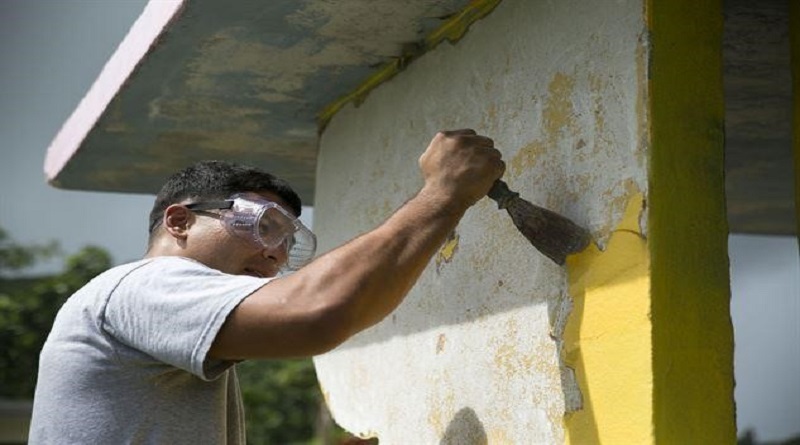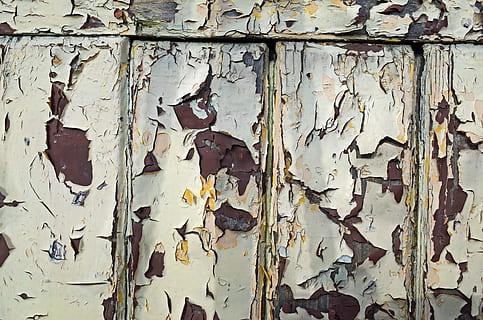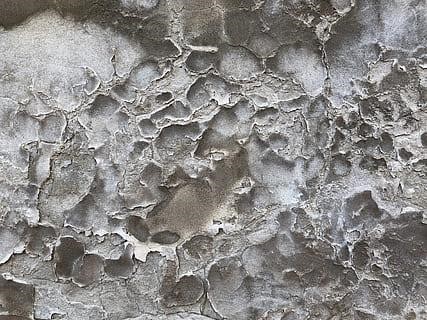The exterior paint of a house tends to wear over the years due to a plethora of reasons. If you paint the walls without fixing the worn paint peels, the result will be the telltale rough edges. It can waste every penny you spend on the new paint and even the labor cost. Therefore, it becomes essential for homeowners to remove the damaged paint before applying a fresh coat of paint.
There are a variety of types of damage caused due to improper use of painting techniques. The peeling and blistering problems also occur due to the use of low-quality paint, not priming, and inadequate prep work before painting. So, let us explore the steps to repair exterior paint peeling.
Foundation drainage is essential because as water gathers around your foundation, it builds up and causes pressure, which pushes against your walls and can cause damage. Foundation drainage collects the gathering water and carries it to a sump pit. Foundation drainage has two main goals. One is keeping water from seeping into your basement or crawl space, and two is preventing foundation problems caused by hydrostatic pressure.
Scrape the loose edges

The first step you need to follow is to scrape away the loose edges formed due to the old worn paint. You can use any paint scrapers that are available easily on the home improvement stores. However, you need to be careful while scraping the loose paint. Otherwise, you might end up damaging the surface. The wooden surfaces can be damaged due to the sharp edges of the scraping tools.
Use a brush to remove the worn paint.
After scraping with a scraper, you need to remove the loose flakes of paint is to use a metal brush, also known as a wire brush. Use a brush with a long handle, stiff and long bristles that are easy for you to work with. You can start working from the edges of the damaged areas and move to the center of the walls. If more paint starts peeling, you need to go back and pry again using a scraper tool.
The wood filler fix
You can fix the peeling areas of paint by using a wood filler that is easily available in home improvement stores. Before applying the wood filler, you should scrape the peels finely using a scraper tool. Also, use high-grade sandpaper to sand the surface before applying wood filler. Then use a putty knife to apply a thin layer of wood filler uniformly on the damaged areas. You should apply the filler slightly beyond the edges of these areas.
Allow the filler to dry completely as given in the instructions on the pack. It takes 45 to 60 minutes for the filler to dry. You should wait at least an hour before sanding the excess filler. After drying, you can remove the excess wood filler by sanding using sandpaper.
Chalking of Paint
Chalking can also lead to peeling of the old paint and needs to be fixed before a fresh coat of paint. It is identified by the presence of fine chalky powder on the surface of the old paint. Chalking is commonly found in the dry and arid locations where there is less rainfall, and the walls are exposed to the harsh sun in the summers.
It is especially common in the homes painted in light-colored shades. Also, chalking is most likely to occur in homes where the low quality of paint is used on the walls. Chalking may run off or stain the surrounding areas.
How to fix Chalking?
Homeowners need to remove the chalking before repainting. You can power wash or scrub it with a cleaning solution and rinsing with water. Enable the walls to dry and paint them with a latex house of high quality. The maceration will be scrubbed with a specific maze cleaning solution to disinfect the brick areas darkened by the chalking exhausts. If bleach persists, a professional cleaning contractor can still wash the brick.
Sagging Paint

The sagging of paint can also lead to peeling on the surface of the walls. The major causes of sagging of paint are the heavy applications or thin paint layers. If the paint was done in a poor environment such as too cold temperatures or high humidity, it could also lead to sagging and further peeling of paint. Also, if you painted on a high gloss surface without priming, it can also lead to sagging of paint. Other reasons include not cleaning the walls properly before priming or painting them.
How to fix the sagging or peeling?
If you catch the sagging when the paint is still wet, you can use a roller or brush to redistribute it uniformly. However, if the paint has already dried, you need to sand the non-uniform areas and paint with another coat lightly.
In the case of a glossy surface, you can sand it to slightly make it rough for the paint to adhere. You can also apply a coat of primer and then repaint the surface. Another way to fix the condition is to use two light coats of paint instead of one heavy coat without overloading the brush or roller.
Peeling due to mildew

Mildew is a fungus that feeds on and grows on the painting or caulk, recognizable through its gray, brown, green, or obscure spots. The formation of mildew is a result of poor ventilation, moisture, and lack of direct sunlight on the painted surface. It can also be caused due to painting over the surface that already had mildew. Using a low quality of paint can also lead to the condition, thereby making the peeling of paint.
How to fix the mildew?
Wear protective gloves and goggles and scrub the surface with a cleaning solution containing trisodium phosphate. You can also use a household bleach solution made up of bleach and water in a 1:3 ratio. Then rinse the surface with clean water.
Wash the surface again with the solution and rinse off with clean water. Let the surface dry completely and paint it with high-quality latex paint.
Poor Adhesion
Peeling could be caused by either humidity or poor adhesion. The peeling caused by lack of adherence can be identified by the paint being peeled and removed from an earlier layer, or from the substratum. Sections of earlier layers of paint can often be seen under the curling, peeling coat.
It can be caused if the paint was on the walls without or poor prep work. If you paint on the dirty or wet surface, it can also cause the paint to peel after drying. Sometimes people paint on a surface with already poor adhesion that causes the peeling of the new coat.
How to fix the peeling due to poor adhesion?
Scrape the old layer of peeling paint and sand the affected areas. Prime the affected area after sanding and caulk the same as required using a good quality caulking product. After sanding, priming and caulking, you can repaint the surface. Make sure you use a good quality of latex acrylic paint of the same color and shade to avoid the identification of a fresh coat.
Final Words
These were the ways to repair the peeling of exterior paint. There are various causes such as poor prep work and using poor quality of paint for peeling. Therefore, it is essential to get the paint done by professional painters. The strata painting Avalon offers a high quality of painting services in and around Avalon. Undergoing proper prep work before painting the walls and surfaces is the key to have high-quality paint jobs and avoid problems like poor adhesion and peeling.



